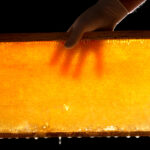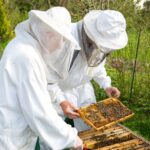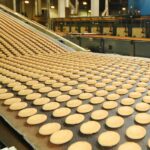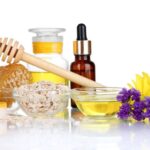
Honey is one of the longest-lasting pantry staples, but many people wonder if it’s safe when it starts to crystallize. The good news? It absolutely is!
What Is Honey Crystallization?
Crystallization is one of the most common—and misunderstood—changes honey goes through. If you’ve ever opened a jar to find your honey thick, grainy, or solid, don’t worry; this is just crystallization, a completely natural process.
Crystallization happens when the natural sugars in honey, primarily glucose and fructose, start to separate. The glucose forms tiny crystals, giving the honey a gritty or creamy texture. It’s more likely to happen in raw or minimally processed honey and when stored at cooler temperatures.
Is Crystallized Honey Safe to Eat?
Yes! Crystallized honey is perfectly safe, delicious, and still full of its original nutrients. It hasn’t spoiled, and in fact, it’s a sign that your honey is pure and unadulterated. Some people even prefer the spreadable texture of crystallized honey.
Worried about texture? You can easily re-liquefy crystallized honey by placing the jar in a bowl of warm (not boiling) water and stirring gently. Just avoid microwaving it—high heat can destroy beneficial enzymes and change the flavor.
Does Honey Ever Go Bad?
Here’s the sweet truth: Honey never really goes bad. Its low moisture content and natural acidity make it incredibly resistant to bacteria and mold. In fact, archaeologists have discovered pots of honey in ancient Egyptian tombs that were still safe to eat!
As long as it’s stored properly in a tightly sealed container and kept at room temperature, honey has an almost indefinite shelf life. Just don’t refrigerate it—it’ll crystallize faster in the cold.
Why Crystallization Is a Good Sign
Rather than seeing crystallization as a flaw, think of it as a badge of authenticity. It’s a common characteristic of raw and minimally processed honey, which retains more pollen, enzymes, and natural nutrients.
Some varietals, like acacia or tupelo, crystallize slowly due to their higher fructose content. But for most honeys, a little crystallization over time is to be expected.
Partner with Honey Source: The Taste of Quality & Consistency
At Honey Source, we’ve spent over 45 years helping businesses like yours access the best-tasting, highest-quality honey on the market. As the premiere West Coast bulk honey supplier, we pride ourselves on consistency, sustainability, and a deep respect for bees’ role in our ecosystem.
Whether you’re sourcing raw honey for food production, retail, or culinary innovation, we can help you find the perfect product to meet your needs. We believe in a world where bees and people thrive—and it shows in every golden drop!
Contact Honey Source today for a quote and discover why we’re trusted by top food and beverage manufacturers nationwide.





